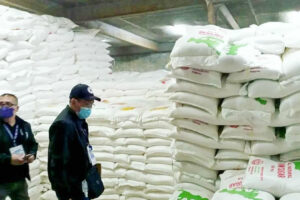THE government’s decision to import sugar during the milling offseason is intended to keep supply stable after El Niño damaged the sugarcane crop, sugar producers said.
United Sugar Producers Federation of the Philippines President Manuel R. Lamata said dry conditions during El Niño inflicted significant damage to the cane.
The Sugar Regulatory Administration (SRA) said the most affected producing areas were Batangas, Southern Negros, and Mindanao.
During the second quarter sugar cane production dropped 42.3% year on year to 1.63 million metric tons (MMT), according to the Philippine Statistics Authority, making sugar the most affected single crop during the period.
Last week, the SRA approved imports of 240,000 metric tons (MT) of refined sugar via Sugar Order (SO) No. 5.
“Despite the relatively stable supply and prices of sugar as of end of June, the finite supply of sugar and the effect of El Niño on sugar farming necessitates pre-emptive and decisive action on the part of the government in order to ensure a reasonable and stable supply and price,” the regulator said.
As of July 21, the refined sugar inventory was 396,339 MT, down 18% from a year earlier, according to the SRA.
The volume of the proposed imports “seems right to tide us over coming harvest season this Sept. 15,” Mr. Lamata said via Viber.
SO 5 is open to importers who participated in SOs 2 and 3 who are Licensed SRA International Sugar Traders in good standing.
Mr. Lamata has said that the sugarcane harvest during the upcoming crop year will likely be delayed due to El Niño.
The government weather service, known as PAGASA (Philippine Atmospheric, Geophysical and Astronomical Services Administration), declared the start of El Niño weather event in June 2023, bringing below-normal rainfall conditions, dry spells and droughts.
El Niño ended in early June 2024, according to PAGASA, but dry conditions are expected to continue.
The US Department of Agriculture projected that Philippine raw sugar production will be flat this year at 1.85 million MT due to the effects of El Niño. — Adrian H. Halili
